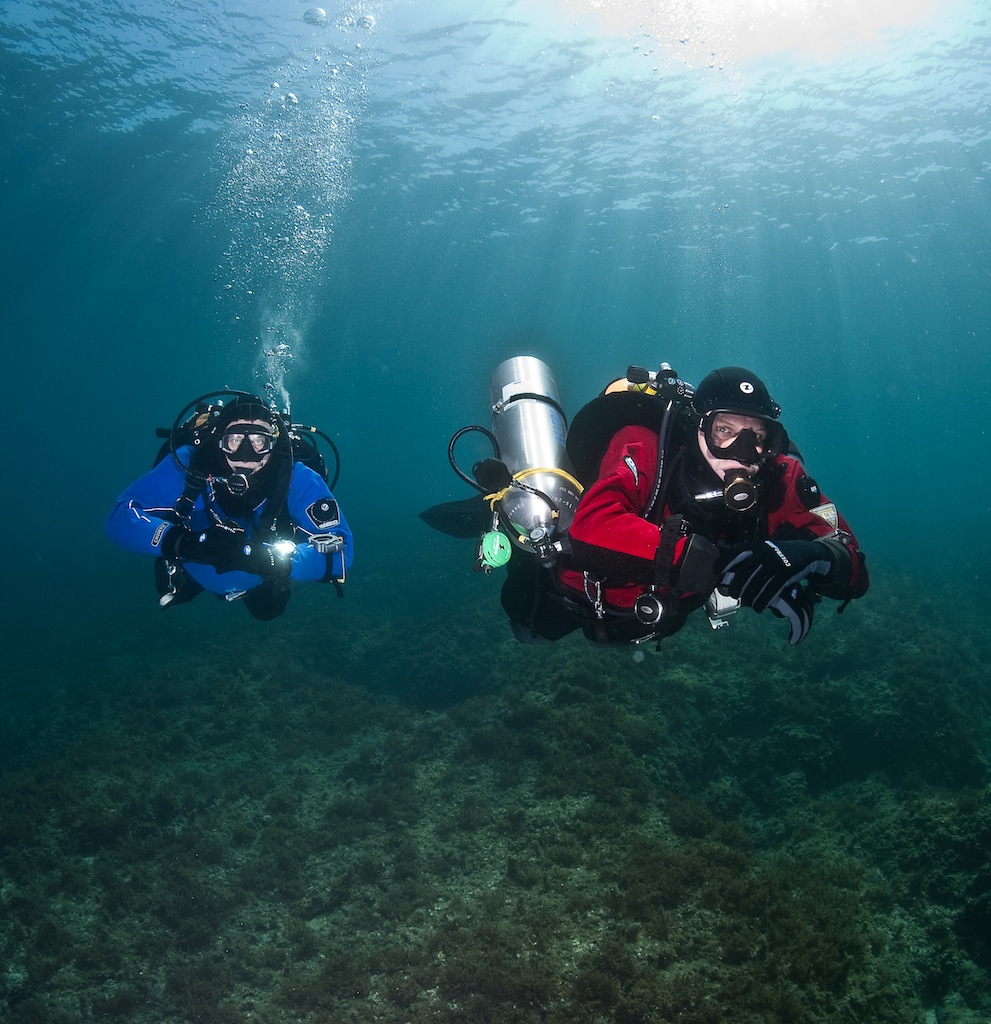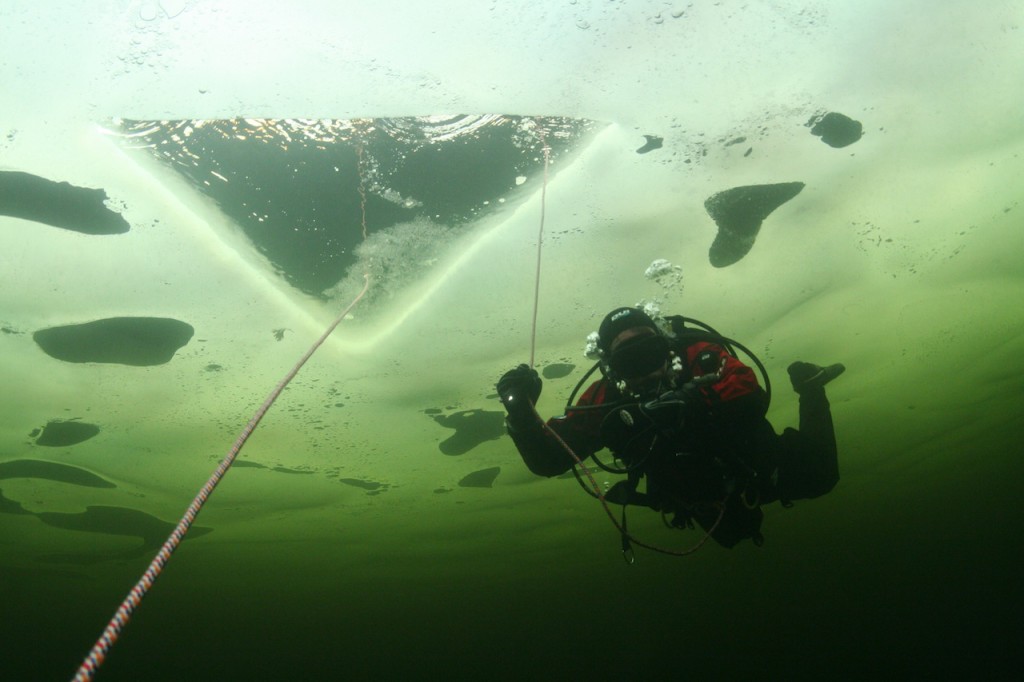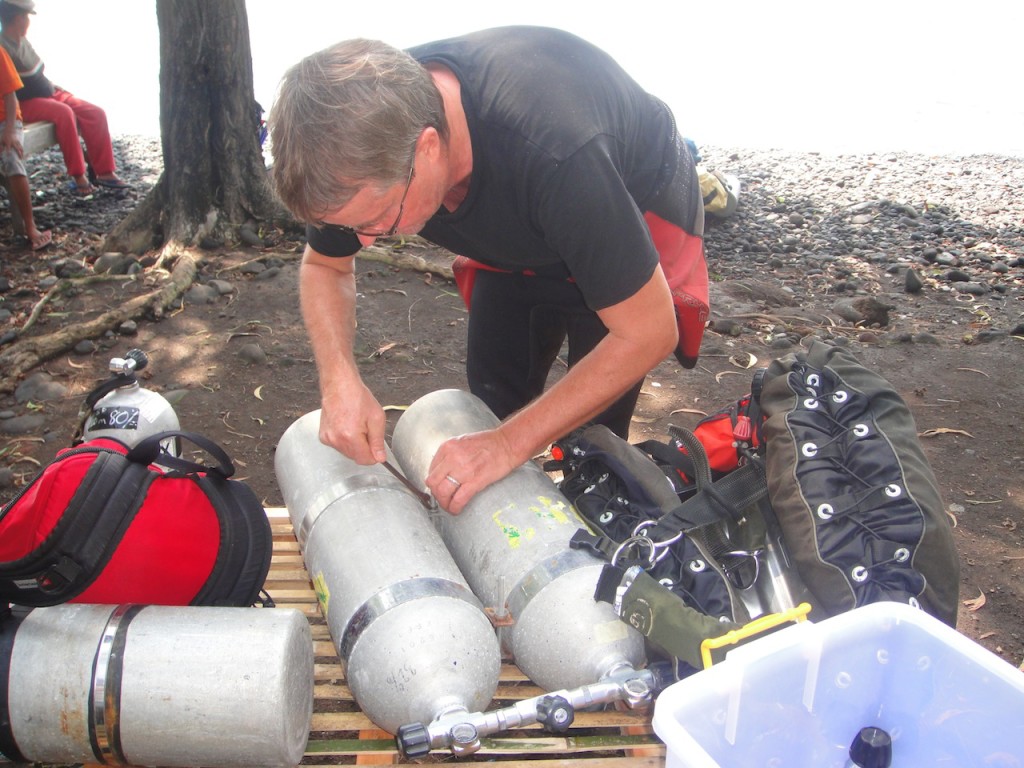News
Beware of Backsliding

Earlier this year I was invited to deliver lectures at the Oztek and ADEX shows in Sydney and Singapore respectively. One of these was on “What Makes a Good Technical Diver” and I based my talk on the Scuba Confidential chapters “To the Extreme” and “Accident Analysis.” Because my audience, particularly at Oztek, was very experienced, I found myself extrapolating on some of the themes in the book. One of the topics I touched on that received a very positive response was the danger of new generations of divers not learning from their predecessors and consequently risking accidents that were entirely avoidable. I called this tendency “backsliding” and gave a few examples to explain what I meant.
Recently I was approached by a pair of technical divers and asked for advice on an incident that had befallen them on a wreck dive. One had experienced what seemed to be have been an oxygen toxicity hit and had needed to be rescued by the other, who had blown off deco to bring him up after he had convulsed and lost his regulator at 6m (20ft.) I asked for the details of the dive and they told me the wreck was on sand at 50m (165ft), they had been diving on air and carrying deco stages of 50% and O2. They had done a little less than 30 minutes on the wreck and on ascent had switched to EAN 50 at 20m and O2 at 6m. After only a couple of minutes at 6m the diver convulsed. Both survived the dive without any residual issues apart from a crisis of confidence.
I first asked if they were sure they were really at 6m when the convulsion occurred and they assured me they were. I told them that there was no history of a diver having had an oxygen toxicity event after such a short time on a PO2 of 1.6 in very shallow water. Therefore, the most likely cause of the incident was that the diver who had convulsed had made a mistake and switched to his O2 at 20m rather than his 50%. The diver said he was sure this wasn’t the case and recounted a whole list of things he had done that made this impossible. However, he admitted he had been up late mixing gas the previous night and had only had a couple of hours sleep as he needed to wake before dawn to drive to the dive site.
The Main Point
I leave it up to you to draw your own conclusions but to my mind the debate over whether the diver had got his cylinders mixed up or not is just a side issue here. The main point is that it was completely unnecessary for these divers to have been carrying two deco gasses in the first place. Either, EAN 50 or the O2 would have done the job just fine and having one gas would have had hardly any effect on the length of time they spent on ascent. They were in calm 30-degree water in the middle of the day after all: a few minutes extra on their hang were hardly going to be a safety issue.
In the early days of technical diving, breathing the wrong gas at the wrong depth was a common problem. Some divers survived; many did not. Labelling and other conventions were established to reduce the chance of this happening. However, human error being what it is, we figured at the time that the best way to make sure you do not switch to the wrong deco cylinder at depth is only to carry one. Except of course when time and safety requirements absolutely insisted that you carry more than one deco gas; for instance if your bottom gas was a hypoxic, helium rich mix.
Back to the Age of Ignorance
This is what I mean by backsliding: a return to practices and procedures that were rejected in the early days of technical diving as being likely to lead to accidents: a step backwards in the evolutionary process either through poor training and ignorance or because divers think somehow that they are too experienced to make mistakes.
Originally, the rise of technical diving coincided with the development of the Internet. Most technical divers happened to be early adopters of the new technology (we are all just geeks deep down!) and this meant that the technical community, though widespread geographically, was closely linked online. So news travelled fast! Especially bad news! Whenever a technical diving death took place, we would pore over the details, not out of morbid curiosity but to see if there were any lessons we could learn or if anything about the accident indicated that commonly adopted procedures might be flawed. When a flaw WAS found, things moved quickly, word passed around, training standards were amended and equipment was modified. This is how our sport developed.
New Ways or Old Ways?
As time passes and new generations of divers embrace technical diving I feel there is a danger that the incidents and accidents that led us to make changes in procedures in the past will be forgotten. Unless newer divers are told why we do things the way we do, there is always the likelihood that they may experiment with new ways that are really just the old ways – old ways that were found to be inherently dangerous so were rejected and replaced by safer ways.
You may think that I am making too much of a relatively minor incident. Unfortunately, divers do not usually tell anyone about their close calls, so this story actually gives us a rare insight that, I believe, is worth dwelling on and sharing. I remember thinking at the time, “I can’t believe that with all we have learned, with all the time that’s been spent over the years trying to improve safety in technical diving, that someone can still manage to get an O2 hit on a short 50m air dive! Where have we gone wrong? How come this sort of thing is still possible?”
More Backsliding
Others examples of backsliding I have seen over the last twelve months or so include: –
- Failing to make a dive plan for a technical dive and letting your dive computer vaguely plan the dive as you go, as per regular no decompression stop sport diving!
- Carrying independent back mounted doubles, one cylinder containing your bottom gas, the other cylinder filled with your deco gas! I don’t know how anyone could think that this is a fresh idea, yet it seems to crop up in different places from time to time as a new generation gets bored of carrying stage cylinders and looks for a lazy way out, not thinking that maybe the lazy divers of previous generations have already passed this way. This is a really easy way of breathing the wrong gas at the wrong depth, as many have found to their cost. It also, of course, completely takes away your bottom gas redundancy.
- Planning overhead environment dives using the rule of thirds but with only a single cylinder and K valve – again with no protection against an air supply failure and showing a complete misunderstanding of the gas rules.
- Diving a NITROX mix trusting the dive operator’s analysis and not checking the mix yourself. This one is becoming pretty much universal, especially on liveaboards.
I recognise that whenever I preach the virtues of past practices I risk coming across as an old fart bemoaning the folly of young people of today and insisting that “back in the day” we knew better. Nothing could be further from the truth. Progress is essential: we are nowhere near a perfect world as far as diving safety is concerned. The fact that every year we lose another friend or two to this sport is ample evidence of that.
Of course, a good technical diver does not remain so entrenched in the ideas of the past that he blinds himself to the opportunities of the future. But repeating the mistakes of the past is not the way forward.
Gear News
Introducing the TR-80, IR-50 and CS-30 Regulators from DYNAMICNORD

Whether you are a beginner or a professional diver – with the three new main regulators from DYNAMICNORD, everyone will find their favourite regulator. They all look super stylish.
Excellent performance with the TR-80
Quality and performance are the be-all and end-all for regulators. It is not for nothing that the TR stands for Tec Reg. The innovative design of the TR-80 guarantees absolute reliability – even in ice-cold waters.

Perfect breathing effort at 0.8 J/l / certified for diving in waters below 10 degrees / structural design made of solid brass for best cold protection / membrane-compensated design with dry seal of the first stage / reduced exhalation effort thanks to optimized exhalation membrane and bubble deflector / adjustable Venturi (dive/predive) and adjustment knob for individual inhalation comfort / innovative design of the front cover prevents free-flow in strong currents or when diving with scooters / design made of sandblasted brass, matt chrome finish / 2 HP and 4 LP outlets / mouthpiece made of high-quality, anti-allergic silicone for maximum comfort.


Amazing underwater adventures with the IR-50
The IR-50 is the top regulator for advanced and experienced divers. Natural breathing is the essence of this regulator.

Ideal breathing effort at 0.8 J/l /certified for diving in waters below 10 degrees / compensated membrane / adjustable venturi (dive/predive) and adjustment knob for individual inhalation comfort/ outlet valve and deflector for minimum exhalation effort and reduction of bubbles on the face / design made of sandblasted brass, matt chrome finish / 2 HP and 4 NP outlets / mouthpiece made of high-quality, anti-allergic silicone for maximum comfort.


The Workhorse – our CS-30
For diving centres and diving beginners – the workhorse stands for strong construction, reliability and robustness. Perfect for your training.

Optimal breathing effort at 0.8 J/l /recommended for diving in waters above 10 degrees / non-compensated piston / adjustable venturi (dive/predive) / outlet valve and deflector for minimum exhalation effort and reduction of bubbles on the face / design made of sandblasted brass, matt chrome finish / 1 HP and 3 NP outlets / mouthpiece made of high-quality, anti-allergic silicone for maximum comfort.


Octopus OP-30
The OP-30 is the ideal addition to all DYNAMICNORD regulators. It is identical in construction to the CS-30.

The TR-80, IR-50, CS-30 (DIN & INT) regulators and the Octopus OP-30 are available from DYNAMICNORD dealers and in the online store.
DYNAMICNORD – Your Outdoor Companion.
Marine Life & Conservation
Paul Watson Released as Denmark Blocks Japan’s Extradition Bid

Renowned anti-whaling activist Paul Watson has been released from custody in Greenland after spending five months in detention. Denmark’s Justice Ministry rejected Japan’s request for his extradition, citing insufficient guarantees that his time already served in custody would be credited against any potential sentence.
The 74-year-old Canadian-American was arrested on July 21 in Nuuk, Greenland’s capital, when his ship docked to refuel. His arrest was based on a 2012 Japanese warrant related to a 2010 encounter in Antarctic waters. Japan alleged Watson obstructed operations and caused damage to a whaling research ship during efforts to disrupt illegal whaling. Watson has consistently denied these claims, maintaining his commitment to marine conservation.
Denmark, which oversees extradition matters for Greenland, concluded that while the legal conditions for extradition were met, the lack of assurances from Japan regarding time-served credit made extradition untenable.
In a video shared by his foundation, Watson expressed gratitude and relief, saying, “After five months, it’s good to be out… and good to know they’re not sending me to Japan.” He added that the most difficult part of his time in custody was being separated from his two young sons.
Watson is a pioneering figure in marine conservation, known for founding the Captain Paul Watson Foundation in 2022 after decades of activism with the Sea Shepherd Conservation Society. His bold efforts to defend marine life have earned him widespread support, including from celebrities and conservationists. His work has also been featured in the acclaimed reality TV series Whale Wars.
Watson’s lawyer, Jonas Christoffersen, praised the decision, stating, “We are happy and relieved that Paul Watson is now free.” He added that Watson is eager to reunite with his family and continue his vital work.
The arrest occurred while Watson’s vessel, the M/Y John Paul DeJoria, was en route to the North Pacific with a team of 26 volunteers to intercept a Japanese whaling ship. His foundation described the arrest as politically motivated and emphasized that Watson’s actions were focused on ending illegal whaling practices.
Japan resumed commercial whaling in 2019 after leaving the International Whaling Commission, asserting that whale meat is a cultural tradition. Conservationists, however, continue to challenge these practices, highlighting their impact on marine ecosystems.
Despite the challenges, Watson remains steadfast in his mission to protect marine life and bring attention to whaling practices. His dedication to ocean conservation has made him a globally respected advocate for the environment.
-

 News2 months ago
News2 months agoIconic SS United States to become the World’s Largest Artificial Reef
-

 News3 months ago
News3 months agoBook Review – 52 Assignments: Underwater Photography
-

 Gear News3 months ago
Gear News3 months agoDYNAMICNORD – New German diving brand enters the British market
-

 News3 months ago
News3 months agoExploring Cenote El Pit: A Diver’s Dream
-

 Gear News3 months ago
Gear News3 months agoTry BARE drysuits (and maybe even win one!) this Friday with Sea & Sea at North West Dive Fest
-

 Marine Life & Conservation3 months ago
Marine Life & Conservation3 months agoBook Review: Coral Triangle Cameos
-

 Blogs2 months ago
Blogs2 months agoDive the Egyptian Red Sea this Autumn with Regaldive
-

 News3 months ago
News3 months ago2024 Ocean Art Underwater Photo Competition Announced

















